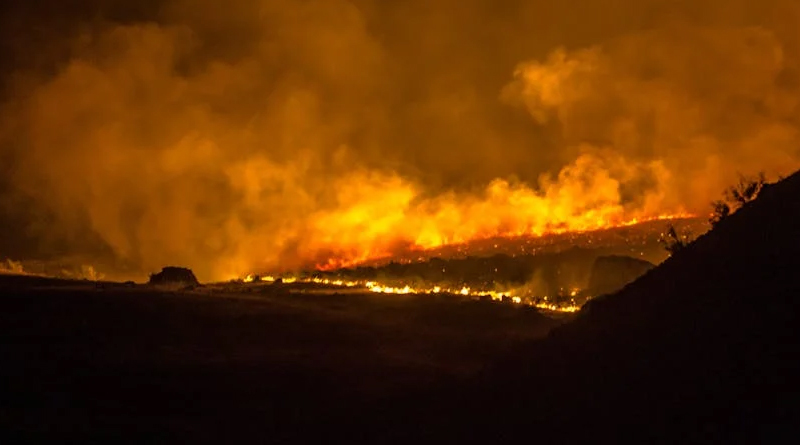TACKLING WILDFIRE THREATS
Southern European nations are all too aware of the dangers of wildfires; in the last two years alone, we have witnessed devastating fires in Greece and Portugal with holiday makers evacuated from many favourite destinations and businesses and homes consumed in minutes. Citizens of northern European nations would be mistaken if they thought this is an issue that needn’t concern them because climate change induced wetter winters in norther climes are fuelling growth that provides the ideal conditions for summer fires.
Wetter, milder winters lead to increased growth of bushes and grass within forests and other habitats. This increased growth then dries out in the summer, and the lack of water, both in the environment and within the plants themselves, turns the added growth into the perfect fuel for a fire. A good example of this is the 2022 wildfires in Dagenham and Wennington in East London. Fortunately, no lives were lost, but many homes, shops, vehicles and acres of farmland were destroyed.
Detection difficulties
Wildfires can spread at a speed of up to 14.27 miles per hour, so it doesn’t take long for a tiny fire to become an uncontrollable monster. This is why early detection is so important.
The traditional forms of detection have been towers, cameras and satellites. All have advantages and limitations. By the time a fire is large enough for the smoke to have risen above the tree canopy and be spotted from a tower (by a human or a camera) it is already well established and becoming difficult to tackle. And a fire has to be fairly large before a satellite will ‘see’ it, and unless the satellite is geosynchronous it may not come into range until the fire is already out of control.
Advances in technology
Sensors have been developed that can be placed in the forest (or other habitats) and can ‘smell’ tiny quantities of smoke, allowing even a small smouldering pile of leaves to be detected well before it turns into a giant fire. The sensors send an alert and can give an exact location helping fire fighters reach the spot as fast as possible. The sensors can even tell the difference between the fumes of a truck driving by and the smoke from a forest fire.
There is often scant mobile coverage in large forests or on remote hills covered with rare heathland, yet this is exactly where we need it if the early detection methods are to work efficiently. Silvanet is a mobile network for the trees: the Internet of Trees. With solar-powered Gateways placed at regular intervals the sensors can speak to each other and send their data out of the forest to the people who need to receive it and take action. This doesn’t mean you can use your mobile deep within the forest, but it does mean the forest can ‘talk’ to the outside world and let it know if a fire is starting.
Calculating fire risk levels by considering various sources of information (satellite, weather stations and potentially local sensors) and then mapping the risk is a complex and tedious task. But it can be automated and enhanced in accuracy and resolution with the help of AI.
If a fire can be detected quickly, then the number of people and the amount of equipment needed can be reduced considerably. Something the size of a bonfire is easily contained by a single team and one truck, but once you have acres of trees aflame, it can require hundreds of people and dozens of fire trucks, plus aerial support.
This can be compounded by accessibility. Even when a fire is spotted in the very early stages, it can take time for the fire crews to reach it. It could be in a remote location, or in a landscape that is difficult to traverse – perhaps vehicles can’t reach the spot. There are many reasons why a fire, even one we know about, can still get ‘out of hand’.
Drones could provide the solution. Fires could be caught quickly, safely and (relatively) cheaply. Dryad has recently received €3.8million EU grant funding to develop drones with this capability and hopes to have the first working units available in the next 2-3 years. This could mark a genuine game changer in the fight against the destruction of wildfires.
 ABOUT THE AUTHOR
ABOUT THE AUTHOR
Carsten Brinkschulte is CEO and co-founder of Dryad Networks.
Dryad provides ultra-early detection of wildfires as well as health and growth-monitoring of forests using solar-powered gas sensors in a large-scale IoT sensor network.
Dryad aims to reduce unwanted wildfires, which cause up to 20% of global CO2 emissions and have a devastating impact on biodiversity.
By 2030, Dryad aims to prevent 2.8million hectares of forest from burning, preventing 1.1bn tonnes of CO2 emissions, saving 166m animals, and preventing $21bn in economic loss.

